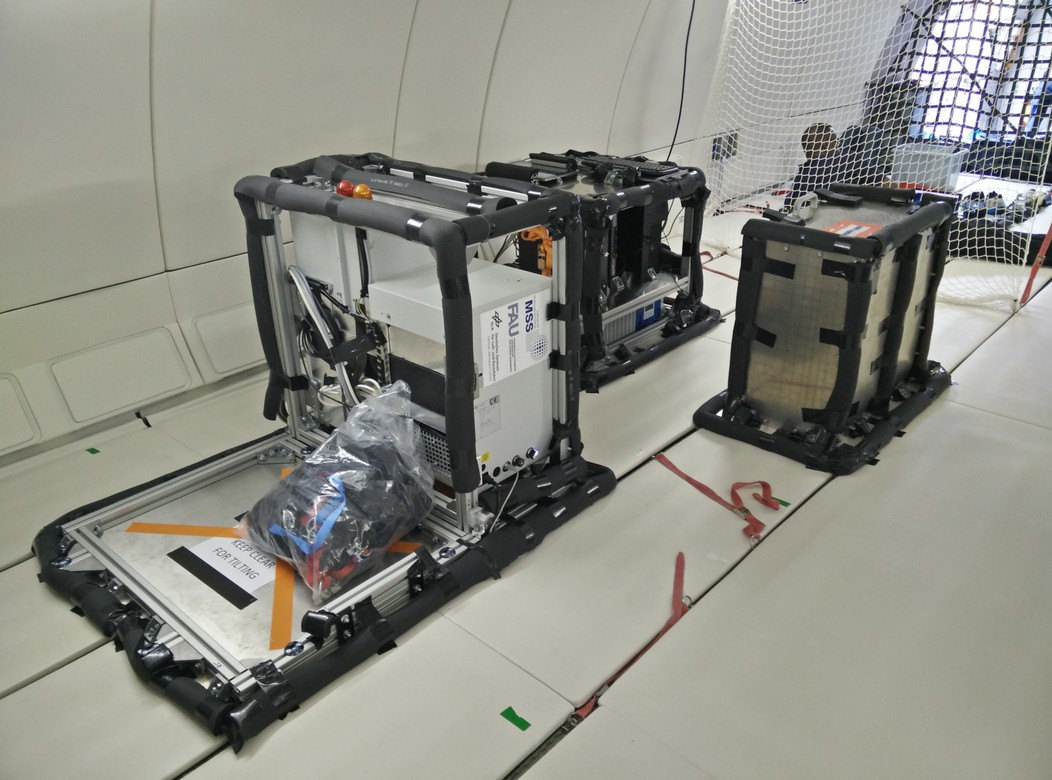As part of the High-Speed Tomography and Radiography in Reduced Gravity project (also known by its German acronym, HORUS), Friedrich-Alexander-Universität (FAU) Erlangen-Nürnberg commissioned researchers at Fraunhofer EZRT to build a CT system for conditions of weightlessness. The experiment was carried out by the university, which investigated whether the Leidenfrost effect can arise in granulates even without the influence of gravity. To run the experiment, the scientists at EZRT swiftly developed a CT system that is suitable for conditions of weightlessness. In September 2017, the system took a parabolic flight aboard a reduced-gravity aircraft.
In a parabolic flight, the aircraft climbs steeply out of a horizontal flight path and then adjusts the turbine thrust to dip sharply again. As the aircraft traces a parabola in the air, the cabin has about 22 seconds of weightlessness. This posed a whole series of challenges: A maximum weight of 200 kilograms was allowed. The researchers had to bolt down all parts, including those inside the system, so as to ensure optimal conditions in reduced gravity. In addition, they were required to observe the French regulations for radiation protection, as the flight took place in Bordeaux. The project supplied the researchers with many new insights into the construction of CT systems.
The German Aerospace Center (DLR) carries out parabolic flights with an Airbus A310 ZERO‑G at regular intervals. On these missions, DLR Space Management works together with the European Space Agency (ESA) and the French space agency CNES. A DLR parabolic flight campaign generally consists of three flight days with four flight hours each. During this time, the aircraft flies 31 parabolas. Its foam-lined interior features separate compartments for some 12 experiments from different research institutions. During a flight, researchers have around 35 minutes of weightlessness to work with – alternating with normal and double gravitational acceleration.
